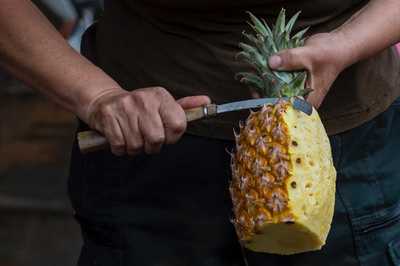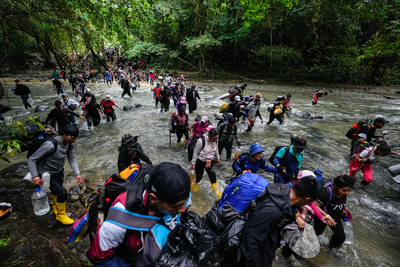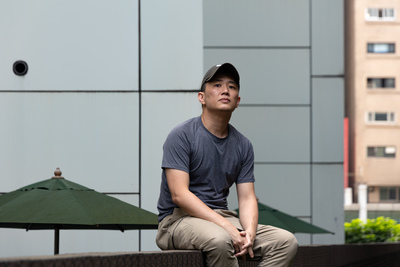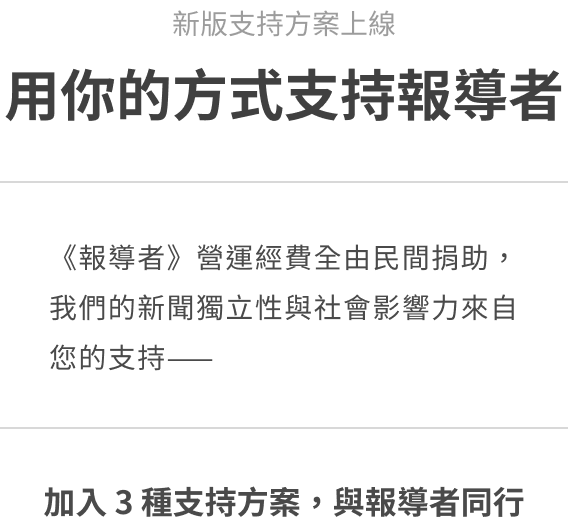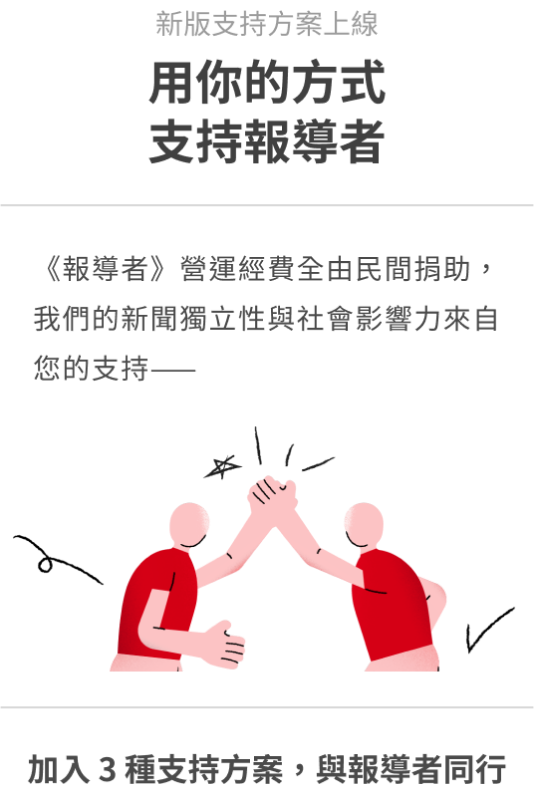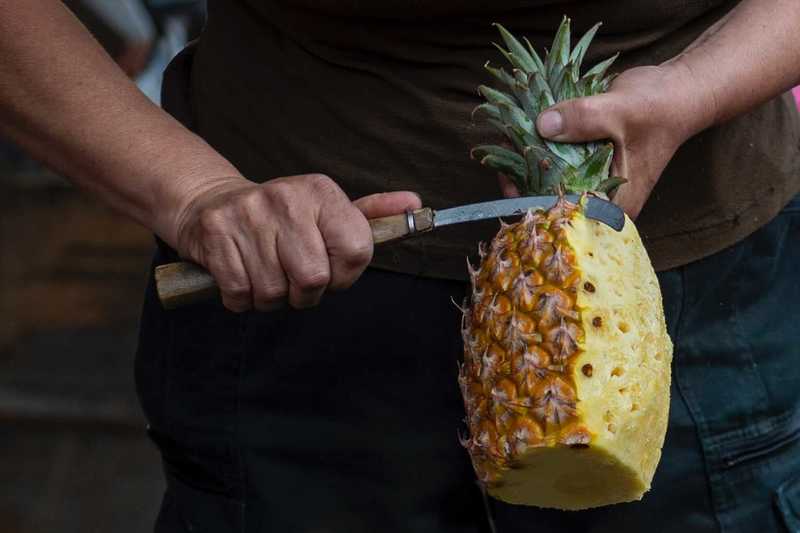
On February 26, 2021, the Chinese General Administration of Customs (中國海關總署) unexpectedly announced a ban on imports of Taiwanese pineapple starting from March 1. The administration claimed that scale insects, a type of pest, were found on the pineapples multiple times. March is the export season for the Golden Diamond Pineapple (金鑽鳳梨), the most common species of Taiwanese pineapples. The Chinese ban came as a shock to the Taiwanese industry. Since China’s reduction of tariffs in 2005, Taiwanese exports of pineapples to China have grown over 258 times over the past 16 years and the market has exceeded NT$1.4 billion. The pineapple became the king of fruit exports in Taiwan, with up to 97% of it exported to China.
Experts and businesses have been aware of the dangers of the export’s reliance on the Chinese market. In fact, after Tsai Ing-wen’s (蔡英文) reelection in 2015, China immediately announced that excess pesticide residues were found on Taiwanese pineapples and increased the sampling rate. In 2012, China did the same to block pineapples from the Philippines, allowing Taiwan to access the market. Despite knowing that the Chinese market is a sugar-coated poison, why couldn’t Taiwan avoid an addiction for the past 16 years? How should Taiwan rebuild a more self-reliant market ecosystem? How should they promote their pineapples internationally and improve the industry?
Taiwan’s most popular fruit for export has to be its pineapples. Looking through news archives on pineapples, there were often headlines such as “Taiwanese pineapples exports at an all-time high” and “Taiwanese pineapples No. 1”. According to the Council of Agriculture of the Executive Yuan (農委會), 420-thousand tons of pineapples were produced, with about 10% of them exported. The export revenues of fresh pineapples, the champion of Taiwanese fruits every year, reached US$54.75 million (approximately NT$1.6 billion), with 91% of the revenue coming from China. In 2019, the export revenue hit an all-time high at US$65.36 million (approximately NT$1.96 billion), with the Chinese market contributing US$63.52 million (approximately NT$ 1.9 billion).
Pineapples are a tropical fruit from South America. Despite Taiwan being the biggest exporter of canned pineapples during the 1970s, the cost of labor and land was too expensive. In the 1980s, fierce competition from the Philippines, Thailand, and other southeast Asian countries forced Taiwan producers to sell pineapples domestically and to the fresh food markets instead.
After the 2005 Cross-Strait Economic, Trade, and Culture Forum (「國共論壇」), China removed all tariffs on Taiwanese pineapples. Despite the improvements in exports for the past few years, the Pineapple industry was always shrouded with insecurity. According to statistics from the Customs Administration (關務署), 97% of fresh Taiwanese pineapples are exported to China; only last year (2020) did exports dropped due to the COVID-19 pandemic.
Since 2020, Taiwanese pineapples exported to China have maintained a 99.79% pass rate in inspections. Despite China also having scale insects, they banned the imports of Taiwanese pineapples directly and broke international trade conventions. For the pineapple farmers, the obvious political interference was a nightmare coming true. Although the Council of Agriculture announced to spend NT$1 billion to stabilize pineapple prices, subsidies cannot truly help the industry. For the past 16 years, Taiwan ignored the warnings of reliance on China, leading to a doomed gamble for pineapple exports.
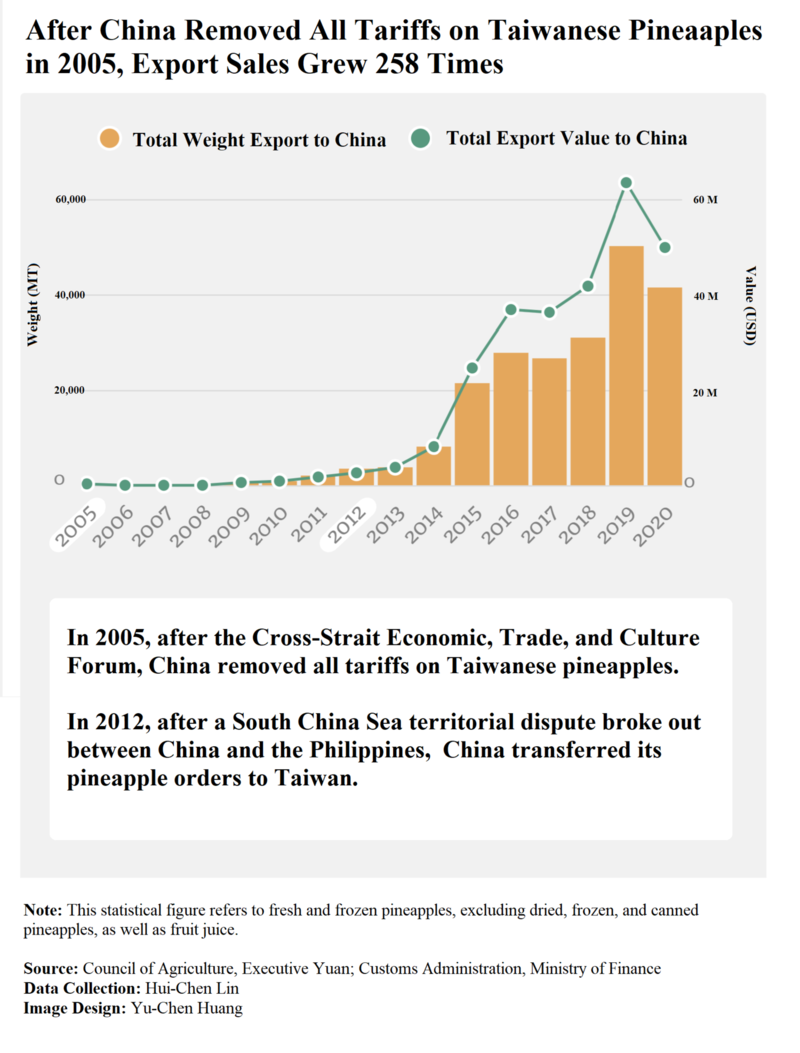
Ten years ago, the Philippines demonstrated the consequences of relying on China. 90% of the imported pineapples in China are from the Philippines, but in 2012, the territorial dispute over Scarborough Shoal (黃岩島) in the South China Sea broke out between the two nations. China announced that scale insects were found on Filipino bananas and banned their imports. All other Filipino fruits were no longer randomly sampled, but instead were 100% strictly inspected in each batch, including pineapples.
Although China insisted this is an agricultural quarantine issue, and not a political one, many including the Filipino Banana Growers and Exporters Association (PBGEA) and American economists believed that this is related to territorial disputes in the South China Sea. Strict inspection processes are undoubtedly a big blow to tropical fruits that cannot be preserved easily. Many Filipino pineapples and bananas rotted while awaiting inspection in the ports. It was only after the pro-China president Rodrigo Duterte’s (杜特蒂) election in 2016 and his state visit to China in the same year that made China restored their huge purchases of Filipino imported fruits. Currently, approximately 70% of imported pineapples in China are from the Philippines.
At the time, Taiwan took advantage of such an atmosphere and expanded its Chinese market. In 2012, 3,524 tons of pineapples were exported in China and it broke through to 50,000 tons in 2019, an increase of more than 14 times.
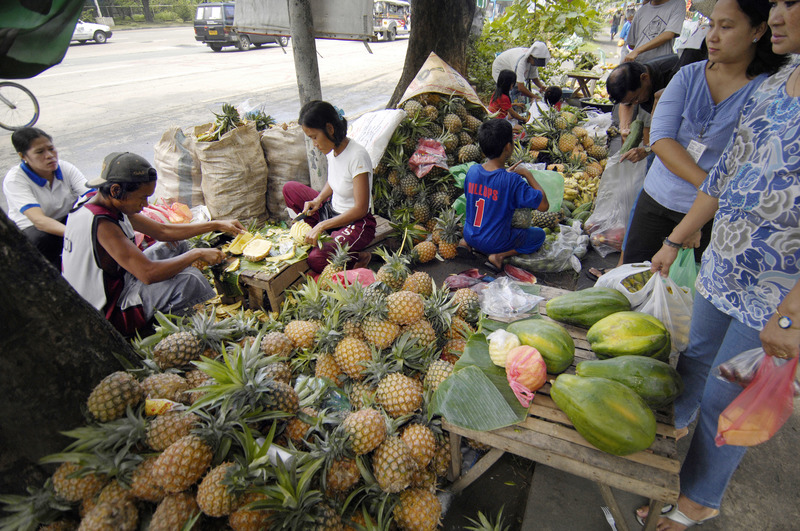
Despite painful lessons from the Philippines, Taiwan consistently ignored another tell-tale warning sign during this export craze. In May 2015, which was the last year of Ma Ying-jeou’s (馬英九) presidency and Tsai Ing-wen’s second presidential election, China announced that pesticides found on Taiwanese pineapples exceeded the standard 7 times, and that the sampling rate would be increased from 5% to 10%. At the time, 89% of exported pineapples were sold to the Chinese market. The news immediately caused panic among farmers.
Despite China not banning imports of Taiwanese pineapples, many farmers who were interviewed by The Reporter at the time stated that domestic sales of pineapples in Taiwan fell from NT$18 to NT$9 per catty. Even then, no one would want it. Many farmers suspected politics were involved and also worried that relying on the Chinese market was too risky. However, exports to China returned to normal and these warning signs were ignored once again.
With the COVID-19 pandemic looming over the world in 2020, and China locking down multiple cities, Taiwanese pineapple exports were blocked and farmers truly felt the pain. According to the Council of Agriculture, last year’s (2020) pineapple export to China fell by 17% compared to 2019.
This pandemic of the century shook the industry and they started to open up the Japanese market, as well as managing to clear Australian import restrictions. In 2020 Taiwanese pineapple exports to Japanese grew doubled, and reached a new 29-year high of 2160 tons. But as China keeps the pandemic under control, exports slowly return to normal. Farmers hoped that with the pandemic slowing down they may continue their old tactic of exporting to China.
In the past decade, there were rumors of pineapple sales crashing nearly every year, as well as worries of Chinese political interference on the exports, but Taiwanese pineapples still maintained a balance of terror on the rope. An exporter to China and Hong Kong said there are concerns of potential sales crashes among the industry every year. However in the second half of last year there were still orders from China nearly every week, and “[pineapples] are gone by the end of the season.”
Now that the nightmare finally comes true, the market is worried that prices will tank as Taiwanese pineapples enter their prime season. Why would the ban be so devastating, despite exports only accounting for 10% of the Taiwanese pineapple industry? The case of the Philippines is revealing. In 2012, China halted the imports of Filipino bananas. In an interview with The Washington Post (華盛頓郵報), the PBGEA stated that despite ranking third in the Filipino export market, the Chinese market was expanding. Prior to the ban, banana export grew by 27% and the growth in 2012 was forecasted to grow by 40%.
Taiwan faces the same situation. The pineapple export to China in 2019 had an explosive growth and grew by 60% since the year before. The 2020 Shennong Award (神農獎) winning Chen Ying-yen (陳映延), who farms dozens of hectares of pineapples in Chiayi County, said that in recent years many merchants and farmers jumped on the bandwagon to export pineapples. Some even borrowed loans to build packaging factories, build logistics centers, buy trucks and related equipment.
Pineapple harvest takes 18 months, so many farmers planted pineapples early last year. As soon as news of the ban came out, Chen Ying-yen was busy answering calls from farmers throughout the morning and discussing the possibility of transferring orders to other countries. Many merchants anxiously told him that they didn’t know what to do. An industry source analyzed that the main cause of this panic was that original plans were disrupted. The market has to receive a large amount of pineapples in a short amount of time, and as prime season comes, prices will definitely tank.
The lesson from the Philippines, the case of 2015 and that of 2020 were all three major warning signals. The farmers were aware of the risks, but the Chinese market was so lucrative that they were unwilling to consider the risks. When Chen Ying-ting was interviewed by The Reporter six years ago, he had already expressed worries over the farmers' over-reliance on the Chinese market. Now, when Chen was interviewed again, he said that China’s previous action certainly made farmers consider the risks of putting too many eggs in a basket. However, if nothing bad happens, they would still operate as usual.
“Packaging factories and farmers of course considered the risks, but it still didn’t happen. If China makes you an offer, will you refuse it?”, he said.
In 2005, China lifted their tariffs on Taiwan. Despite knowing that the orders for pineapples were politically motivated, many exporters and farmers all stated that Taiwanese pineapples did indeed win the Chinese market’s heart with their quality.
Chen Ying-yen listed a few advantages of exporting to China:
- There are many Taiwanese businesses in China that have markets and contacts;
- Both sides of the strait speak the same language with similar eating habits, and low barriers to entry;
- The Chinese market is large with its huge population
- Short transportation distance means the produce remains fresh.
“After the implementation of the “mini three links” (小三通), the pineapples can be harvested in the morning, packaged in the afternoon, then sent to ports by night. By the next day, they will arrive in China and reach their markets within three days,” Chen Ying-yen said. Because of the short distance, Taiwanese farmers can let their pineapples ripen more before harvest. Compared to the Philippines, which will take nearly a week to reach the shelves of Chinese retail stores, Taiwanese pineapples thus have a better flavor than Filipino pineapples.
This extended period of peaceful trade relations however made the pineapple agriculture system in Taiwan complacent and more reliant on the Chinese market. Before the reliance on the Chinese market, Taiwan’s greatest exporter of fresh pineapples was Japan. Exports to China were approximately NT$37 per kilo and exports to Japan were around NT$41 per kilo.
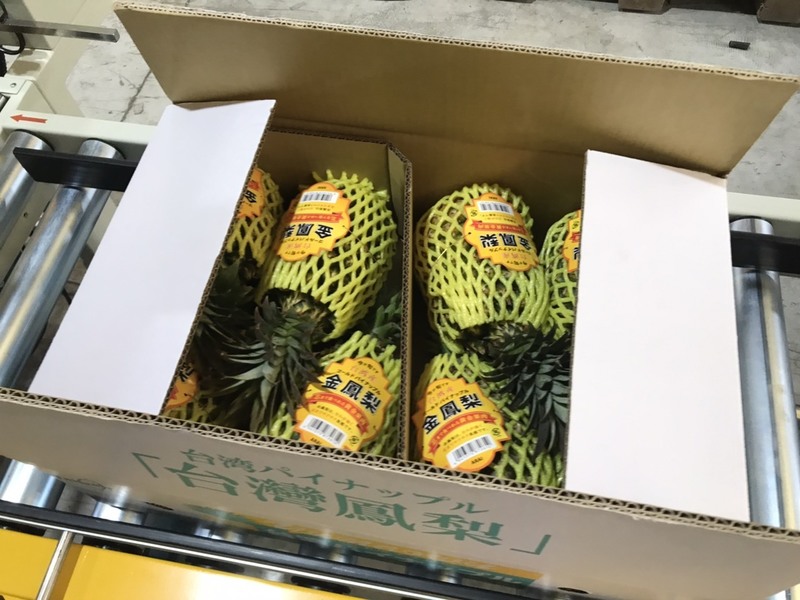
The Japanese market demands pineapples with high sweetness, moderate acidity, no worm holes, aromatic and strict pest requirements. As pineapples are in short supply in recent years, the demanding Japanese market is often ignored by farmers. Ms. Chan, a merchant in the Japanese market, pointed out that the lack of supply forced her to reject orders from Japan. Before February 26, more than 10 pineapple businesses were unwilling to export to Japan. As soon as news of the Chinese embargo came out, more than ten businesses asked whether she needed pineapples.
In Chen Ying-yen’s experience, dealing with Japan is skill-intensive but the quantity and price is stable. He said Japan’s strict requirements help the industry to improve their techniques, but their field inspections and sampling discouraged the industry.
“As long as you meet their requirements, the prices and quantity are always stable,” he said.
The smooth business relations with China is like a sugar-coated poison that numbs the Taiwanese industry and even exports to China become chaotic. A Pingtung County official, the county with the most exports, said that Pingtung pineapples are highly recognised in China for its sweetness and juiciness. Some pineapples from other counties even pretended to be from Pingtung and damaged Taiwanese pineapple’s reputation. During the excessive pesticide residue incident in 2015, the Council of Agriculture admitted that China found pesticide residue violations a year ago and the council did not manage and inspect the exporters.
“Farmers sell us the products when prices fall, and when prices rise they don’t even bother to ask. I have to ask them myself,” said Zhou Wen-qin, the chairman of the board of Jalee Fruits and Vegetables Producers’ Cooperative (嘉利果菜生產合作社), which conducts business with China and Japan. Sometimes when the price is good, farmers would hope for higher than initially negotiated price or even unwilling to sell, forcing his business to plant more himself. “For the sake of business, I have to complete my orders even if it’s at a loss.”
Doing business with Japan is stable, as calculations for harvest areas are made and purchase prices are guaranteed after orders are confirmed. Meanwhile, doing business with China is like a gamble. Zhou admits that there are no contracts when exporting to China as only verbal agreements are made. For example, sometimes they would verbally ask for 200 or 300 standard containers of pineapples and haggle when Taiwanese prices drop.
“Chinese clients are not very stable so we also don’t bother to have contracts with them”, he said
With no contract, there would be no deposit. Zhou said that under normal circumstances, Chinese merchants should compensate for some of the costs when China banned the imports. However, they merely told him to figure it out himself.
Doing business with China is profitable yet risky. Zhou was scammed by clients before. On one occasion, the clients claimed to find scale insects on their pineapples and refused to pay. So why continue to do business with China?
“Of course I hope for stability just like Japan, but we can’t afford to enter the Japanese market,” he admitted.
Taiwan must face the reality now. The Council of Agriculture announced to spend NT$100 billion to stabilise pineapple prices as soon as they received notice of the Chinese ban. The aim was to transfer the thirty thousand tons of pineapples, originally for China, to other countries such as neighbouring Japan, Canada where there is a high Chinese population, and the Australian market which was just opened last year. However, pineapple varieties alone pose a great issue.
85% of Taiwan’s harvest is the Golden Diamond Pineapple, which is very sweet and juicy yet difficult to store and short shelf life makes the logistics for international markets difficult. According to a research conducted by the Chiayi Agricultural Experiment Branch, Taiwan Agricultural Research Institute (農業試驗所嘉義分所), the Golden Diamond Pineapple has a shelf life of two weeks only. Transporting to Japan, along with inspection and clearing would take at least a week, meaning merchants would only have a week left to sell the pineapples. Shipping to Australia and Canada would take two weeks; this adds to the difficulty for the Golden Diamond Pineapple to reach the international market.
An industry person who wished to stay anonymous said that shipping pineapples to China is just like shipping pineapple from Southern Taiwan to Northern Taiwan - there are not many logistical issues. However, exporting to other countries requires effort during the cultivation phase. For example, the Golden Diamond Pineapple is easily affected by rain and heat which can cause them to contain too much water and ripe too early, resulting in a fermented alcohol taste. It must be transported by cold chain also. Cultivation, post-harvest processing, and logistics are all equally important in exporting pineapples.
Currently, MD2 is the mainstream variety for global exports of pineapples. While their taste is not as good as the Golden Diamond pineapple, their quality is more stable and are not as perishable. Chen Kan-shu, the director of the Chiayi Agricultural Experiment Branch, said that water can be used to get rid of scale insects on MD2, but the Golden Diamond would rot easily and thus can only use wind to blow scale insects away. Currently, the branch is experimenting with processing techniques but certain technical issues need to be overcome before it is ready for publication.
Besides breed and logistical issues, transferring orders to Japan is difficult due to the pandemic. Chen Ying-yen said that Japanese merchants are careful and would inspect farms before signing contracts. However, they are unable to come due to the pandemic. For farmers who had collaborated with Japan, they might see an increase in purchasing volume, but for other farmers, they are not trusted as much and so cannot enter the market as easily.
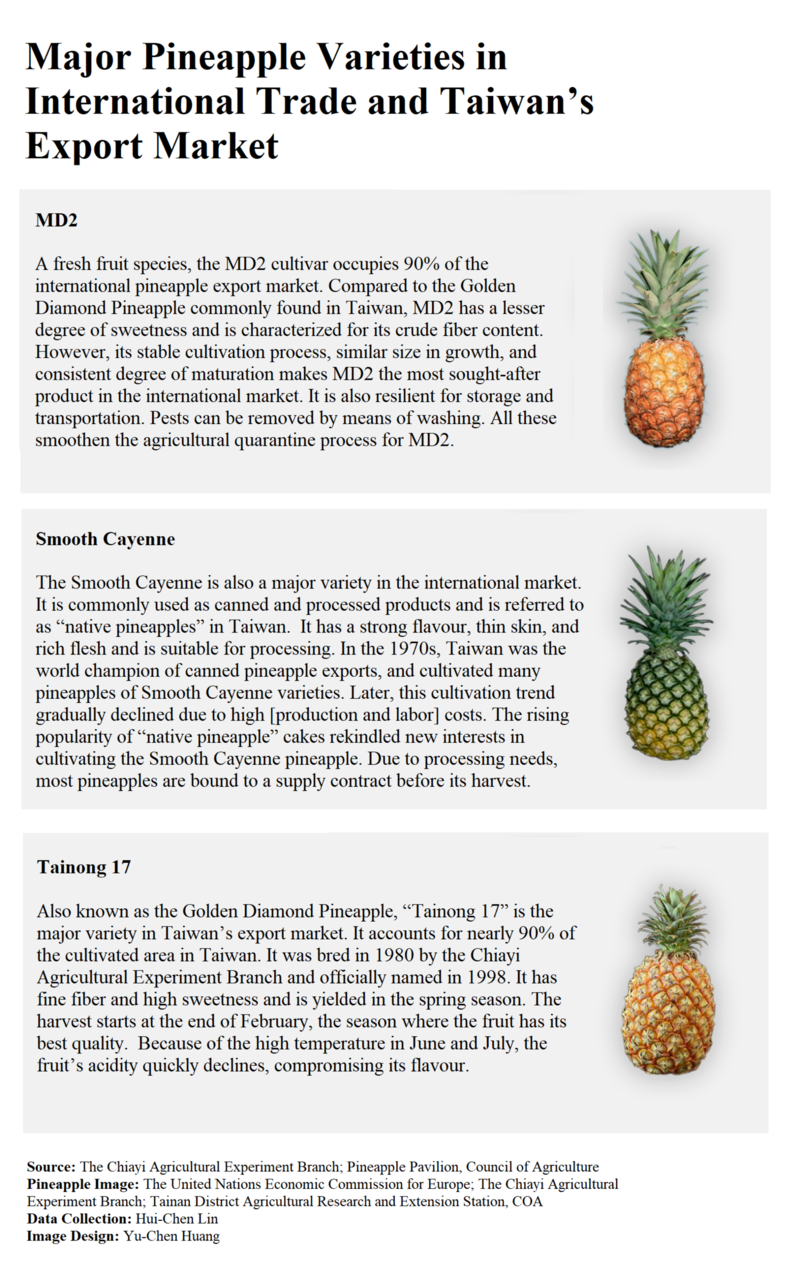
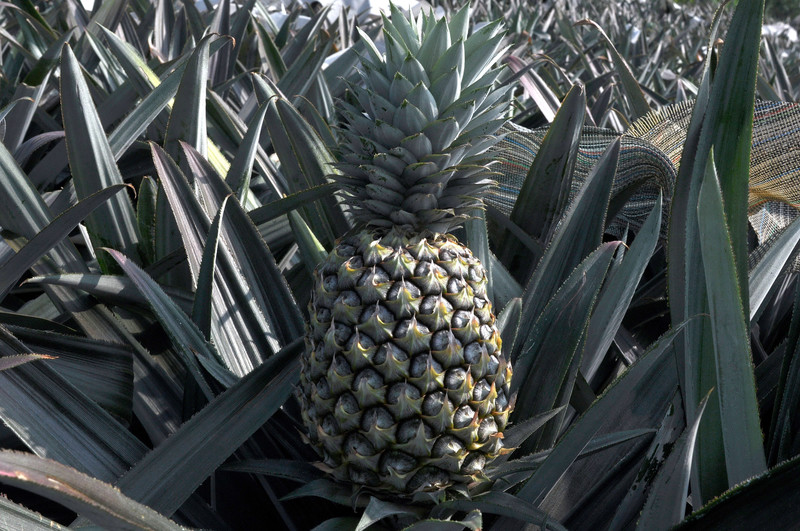
Last year, due to the COVID-19 pandemic, people from the industry became increasingly aware of the crisis and started to increase the export volume to Japan. One of their secret weapons is the newly developed variety “Tainong No.23” (台農23號) from the Chiayi Agricultural Experiment Branch. “Tainong No. 23” is also known as “mango pineapple” because of its aroma.
Chen Ying-yen is also one of the farmers who cultivated “mango pineapple” that have been exported to Japan. He said that Japanese people love fruits with a strong aroma. Last year, when they first sold it in Japan, two containers of 14 tons of pineapples were immediately sold out. They were evaluating the market reaction to the new product. If the amount of export increases steadily, they will consider expanding the cultivation area of mango pineapples to partially replace the Golden Diamond Pineapple export.
“This is the flagship variety for future export,” said Chen Kan-shu confidently. Characterized by its taste of sweetness and acidity, “Tainong No.23” is more resilient to storage and transportation. It can also withstand the rainy season and is less likely to absorb too much rain water and ripe too early. In addition, “Tainong No.23” is suitable for cultivation from June to September. It can sometimes even grow in October, which can just fill the gap for cultivation after the Golden Diamond Pineapple has grown from March to May. It is also suitable for export to countries that need long shipping time, such as Canada and Australia.
“Tainong No. 23” has a mango aroma, which earns it the name of the “mango pineapple”. It is a hybrid cross-bred from the parent cultivars “Tainong No.21” and “Tainong No.24.” The Chiayi Agricultural Experiment Branch started experimenting with its cultivation in 1994. It took them 24 years to obtain the new variety, which was then officially released in 2020.
The sweetness and acidity of “Tainong No.23” is relatively higher. It has a good flavour when cultivated in summer, which can fill the gap in the market of the Golden Diamond Pineapple. “Tainong No.23” will not easily become a poor-quality fruit (肉聲果), containing too much moisture and ripening too quickly. These unique characteristics make it suitable for export and long-distance transportation.
The production cost of Taiwanese pineapples is twice as high as that of its Southeast Asian competitors. The average weight of a “Tainong No. 23” is 1.4 Kg. This is a suitable size for small families to consume. Additionally, small sizes lower the price of the pineapple, making it more easily accepted by the international market.(Source: Chiayi Agricultural Experiment Branch)
However, to participate in the international market, Taiwan has to strengthen its basic competitiveness, one of which is tariffs.
As early as 2016, in the Agriculture Exchange meeting of the Tokyo International Food Exhibition in Japan, the mayors from 5 counties and cities--including major pineapple export areas such as Pingtung, Kaohsiung, Tainan, and Chiayi--gathered together and requested the Japanese government to reduce 17% of tariffs on Taiwanese pineapples. Taiwan's main market competitor, the Philippines, produces pineapples at half of Taiwan's production cost. In addition, they signed a trade agreement with Japan that no tariff is to be applied to pineapple exports of 900 grams or below. As of today, there are still 17% of tariffs on Taiwan's pineapple exports to Japan.
A fruit trader from Southern Taiwan has been observing the trend of Taiwanese pineapple exports for years. He mentioned, “China has been giving us benefits, but what has the government done to prevent farmers from over-relying on it?” Pineapple is a tropical fruit; thus, export can only go north, not south. Taiwan can still export to neighbouring Japan and South Korea. Although the export amount might not exceed that of China, at least it can diversify the export market. The government, however, has not been active on this strategy. They only use the export amount relying on China as a propaganda for political achievement.
He also raised an example. The South Korea market likes the flavour of Golden Diamond Pineapples, yet the tariff on pineapples is as high as 30%. Without the involvement of Taiwan-Korea FTA (Free Trade Agreement) and other country-to-country economic and trade framework, Taiwan can still exchange the import tariffs on designated fruits to exchange for more export, such as increasing the import quota for Korean pears or reducing tariffs, and strive to reduce the tariff on Taiwanese pineapples in South Korea.
According to the statistics of the Bureau of Foreign Trade (國貿局), the top three largest importers of pineapples in the world are the United States, the Netherlands, and China. The main producers of pineapples are from Costa Rica and the Philippines. Taiwan’s production cost is twice as much as these countries. Thus, Taiwan can only count on the quality of its pineapples to win a seat in the international market. Taiwan cannot wishfully ask its target markets to accept things as they are. “We have to study the food consumption patterns of the target countries and promote the sales further.” As people from the industry who have visited Japan, Australia, Europe, the United States, and other markets for a long term also mentioned, there will certainly be a lot of government resources poured into the industry in the short run. But they have to first understand what kind of pineapples the market really wants, how Taiwan should position itself in the market, and what potential problems can be solved step by step.
For example, Chinese people love large pineapples weighing 1.5 kg each. Japan loves smaller types weighing about 1kg. Canada is a huge market, but the shipping time is too long. The quality of Taiwanese pineapples is not stable enough. They have to research deeply into the causes, whether it is the problem of transportation or cultivation, to minimize the loss. Otherwise, the good quality of Taiwanese pineapples will be of no use. But the government’s resources are centered on the cultivation and post-picking process. “They don’t care about anything after the pineapples are loaded in containers.” We can only rely on the traders to report the loss but no systematic research on the market demands is in place. “We have talked about market diversification for a number of years, but where are the corresponding policies? Subsidies on relevant transportation costs can only solve short-term problems. In the long-term, we still need a stable rise in profits instead of a short-term surge in export amount.”
He lamented that at present, Taiwan's pineapple export market only targets the Chinese community, be it in Canada or Australia. Because their living customs are similar to that of Taiwanese, the Chinese customers treat pineapples as fresh fruit; this saves the exporters a lot of time and effort for promotion. But people outside of the Chinese market are unfamiliar with Taiwanese pineapples. They even do not see pineapples as fruit but as a salad or side dish. Pineapples will be good enough if they have a pineapple taste, for it will be drizzled with yogurt or other sauces for seasoning anyway. Consuming the fruit this way, one does not need to tell whether the pineapple comes from Taiwan or the Philippines. For Taiwan’s pineapple export market to expand, promotion strategies are needed so that non-Chinese customers can treat Taiwanese pineapples as fresh fruit. It is a pity to douse them with sauce.
Yao Zhi-wang (姚志旺), the Deputy Director of the Agriculture and Food Agency (農糧署), said frankly, “China is not very reliable.” The Council of Agriculture has also always been concerned about the risks of putting all the eggs in the same basket. In the past few years, they have diversified to other markets, but they have to transition the market share slowly. They will not give up the Chinese call in the short term, and will continue to negotiate with China through other channels. He also said that after this transitional moment, pineapples’ cultivation area might be reduced. The new market mechanism will allow farmers to think about crop type transfer. The new cultivation area should be set in a reasonable range to make profits for everyone. The Council of Agriculture will continue to guide on exporting and processing and encourage local people to eat more pineapples these days.
The agriculture units in the government keep promoting Taiwanese pineapples as juicy, tasty, and competitive in terms of their good quality. However, in the international arena, Taiwanese pineapples with a high production cost are far less well-known than the Filipino pineapples that have a low price and can be produced all year round. “Japanese people have been eating Filipino pineapples since childhood. 99% of them have never tasted Taiwanese pineapples before,” said Chen Ying-yen. There is still space to improve export sales to Japan. When the government subsidizes exports, there are inevitably orders influenced by political factors. But politically driven orders mark only the beginning. Leaving a good impression among consumers on the quality and taste of Taiwanese pineapples is essential to establish a stable market for the long term.
(To read the Chinese version of this article, please click: 6年內2度遭中國突襲,台灣鳳梨如何跳脫「養套殺」外銷迴圈?)
用行動支持報導者
獨立的精神,是自由思想的條件。獨立的媒體,才能守護公共領域,讓自由的討論和真相浮現。
在艱困的媒體環境,《報導者》堅持以非營利組織的模式投入公共領域的調查與深度報導。我們透過讀者的贊助支持來營運,不仰賴商業廣告置入,在獨立自主的前提下,穿梭在各項重要公共議題中。
你的支持能幫助《報導者》持續追蹤國內外新聞事件的真相,邀請你加入 3 種支持方案,和我們一起推動這場媒體小革命。

